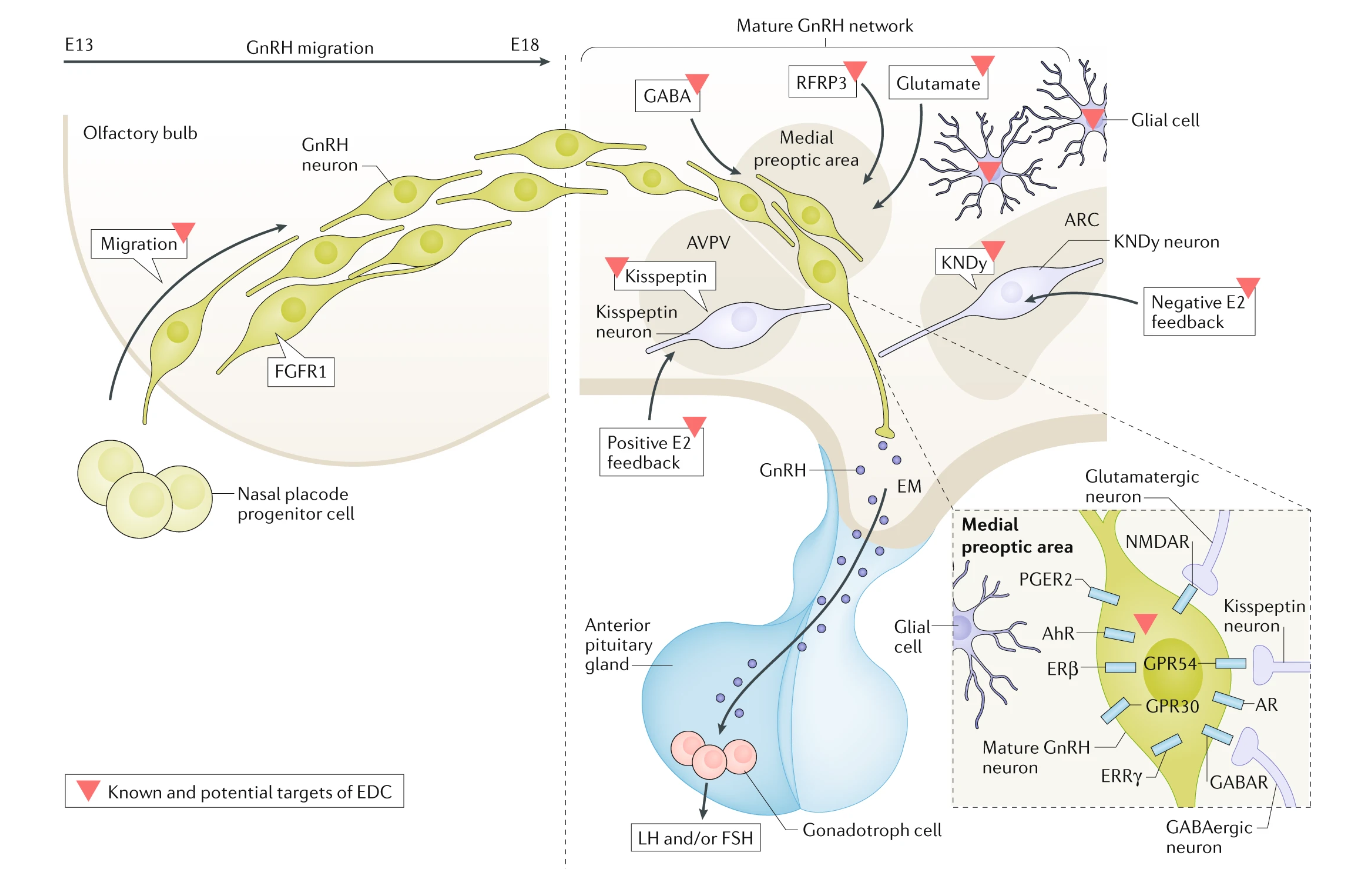Summary. The onset of puberty and the female ovulatory cycle are important developmental milestones of the reproductive system. These
processes are controlled by a tightly organized network of neurotransmitters and neuropeptides, as well as genetic, epigenetic and hormonal
factors, which ultimately drive the pulsatile secretion of gonadotropin-releasing hormone. They also strongly depend on organizational processes
that take place during fetal and early postnatal life. Therefore, exposure to environmental pollutants such as endocrine-disrupting chemicals (EDCs)
during critical periods of development can result in altered brain development, delayed or advanced puberty and long-term reproductive consequences,
such as impaired fertility. The gonads and peripheral organs are targets of EDCs, and research from the past few years suggests that the organization
of the neuroendocrine control of reproduction is also sensitive to environmental cues and disruption. Among other mechanisms, EDCs interfere with
the action of steroidal and non-steroidal receptors, and alter enzymatic, metabolic and epigenetic pathways during development. In this Review, we
discuss the cellular and molecular consequences of perinatal exposure (mostly in rodents) to representative EDCs with a focus on the neuroendocrine
control of reproduction, pubertal timing and the female ovulatory cycle.
This project was held at the laboratory of Prof. Anne-Simone Parent
(GIGA-Neuroscience, University of Liege, Belgium).
Related publications

